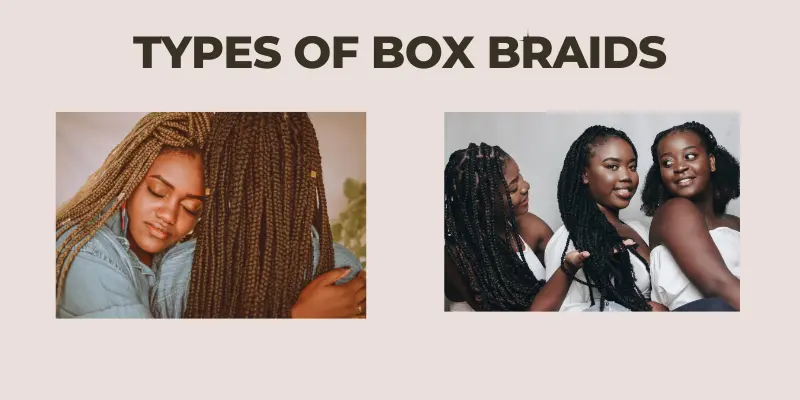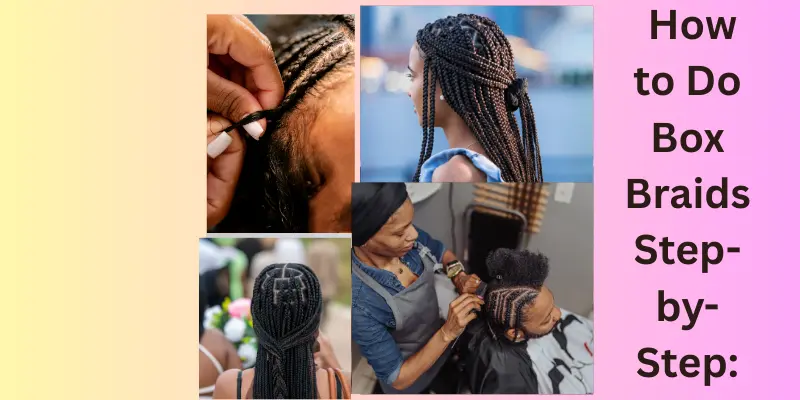Master Box Braids Styling – The Ultimate Beginner’s Guide
Published: 25 Nov 2024
Master Box Braids are a timeless and protective hairstyle that has been embraced by women of all backgrounds, particularly within the African diaspora. This classic style carries cultural significance and is deeply rooted in African traditions. Beyond its heritage, Master Box Braids offer versatility and style, suitable for long or short hair, with or without extensions. Whether you’re exploring bold new looks or protecting your natural hair, box braids are a powerful expression of beauty and identity.
Preparing Your Hair for Box Braids
Preparing your hair for box braids involves cleansing, deep conditioning, and detangling to ensure a healthy base. A solid Hair Detangling Guide can help you remove knots gently and efficiently before styling. Trim split ends and stretch your hair for easier braiding.
Clean and Condition
Before braiding, always start with clean hair. Wash and deep condition your hair to remove buildup and restore moisture. Use a lightweight, hydrating conditioner to avoid weighing down your strands.
Detangle Thoroughly
Use a wide-tooth comb or detangling brush to remove knots while your hair is still damp. Smooth, knot-free hair makes the braiding process faster and reduces breakage.
Choose Suitable Extensions
If you’re using extensions, choose a texture and color that closely match your natural hair. Synthetic hair is budget-friendly, while human hair offers a more natural look and feel, but at a higher cost.
Types of Box Braids
Box braids come in various styles, sizes, and lengths—each offering a unique look and vibe. The image below showcases different types of box braids to help you choose the best style for your hair goals.

Now that you’ve seen the variety of box braid styles, let’s dive into each type and explore what makes them special in terms of appearance and maintenance.
Small Box Braids
Intricate and refined, small box braids offer a polished and elegant look. Ideal for professional or formal settings.
Large Box Braids
Bold and trendy, large box braids are perfect for making a fashion statement. They require less time to install and are easier to manage.
Bob Box Braids
Short, shoulder-length braids that are stylish and low-maintenance. A favorite for summer or casual wear.
Knotless Braids
Designed to be gentler on the scalp, knotless braids reduce tension and create a natural, seamless look from root to tip—making them a favorite for those seeking both Hair Styling and Stress Relief.
Tools and Materials You’ll Need
- Rat Tail Comb – For precise sectioning
- Blow Dryer – To stretch the hair
- Satin Scarf – Protects your style overnight
- Elastic Bands – To secure braid ends
- Bobby Pins – To tame flyaways
- Hair Clips – For separating sections
How to Do Box Braids: Step-by-Step
Creating box braids at home might seem challenging, but with the right steps, it becomes manageable and even fun. The image below outlines the step-by-step process to achieve flawless box braids.

After reviewing the visual guide, let’s break down each step in detail to ensure your braiding process is smooth, neat, and protective for your natural hair.
Step 1: Sectioning
Use a rat-tail comb to divide your hair into even parts. Clip each section to keep things neat. This step determines the final look, so take your time.
Step 2: Add Extensions
Match the extension size to your natural hair. Start braiding by wrapping the extension around the root and then weaving it into your hair. Keep tension firm but comfortable.
Step 3: Secure the Ends
Tie off the ends with an elastic band and dip them in hot water. This seals the braid and prevents fraying.
Step 4: Maintain Scalp Health
Apply light oils (like coconut or olive oil) every few days. Gently massage your scalp to boost blood circulation and keep your scalp hydrated.
Personal Experience with Box Braids
The first time I tried knotless box braids, I was amazed by how light they felt. Unlike traditional styles, these didn’t tug at my scalp. I stayed consistent with moisturizing and slept with a satin scarf. The braids lasted almost two months, and my hair remained healthy.
Common Mistakes to Avoid
- Over-tightening Braids – Can cause breakage or scalp damage
- Skipping Moisture – Leads to a dry, itchy scalp
- Using Mismatched Extensions – Creates an unnatural appearance
Tips for Beginners
- Be Patient – It takes time, especially the first few tries.
- Protect at Night – Always use a satin or silk scarf.
- Don’t Overdo It – Avoid re-braiding frequently to prevent root damage.
Final Thoughts
Mastering box braids is a journey that blends creativity with self-care. With the right prep, tools, and techniques, anyone can create this stunning, protective style. Whether you’re new to braiding or a seasoned stylist, focusing on scalp health, proper technique, and following key hair growth tips ensures long-lasting beauty and encourages healthy hair growth.
FAQs Master Box Braids Styling
Box braids typically last between 6 and 8 weeks if properly maintained. The duration depends on how well you care for your scalp, moisturize your hair, and protect the braids at night with a satin scarf or bonnet. Keeping them in longer than recommended can cause tangling, matting, or even breakage at the roots. Regular upkeep helps your style last without damaging your natural hair.
Yes, washing your box braids is important for scalp health. Use a diluted shampoo or a gentle cleansing spray to target the scalp without roughening the braids. Focus on massaging the roots to remove dirt, sweat, and product buildup. Rinse thoroughly and allow braids to dry completely to prevent mildew or odor.
Box braids themselves don’t directly speed up growth, but they do protect your natural hair from daily manipulation. By reducing breakage, tangling, and constant styling, your hair has a better chance of retaining length. If paired with a healthy scalp routine and moisturizing oils, braids can support stronger, healthier growth over time.
Yes, people with fine hair can wear box braids, but the size and tension matter. Smaller braids are lighter and place less stress on the scalp, making them ideal for finer strands. Using lightweight synthetic hair can also help reduce strain. Always make sure the braids aren’t installed too tightly to avoid thinning edges.
Itching is common when wearing box braids, but it can be managed. Regularly applying light oils, leave-in sprays, or scalp moisturizers helps soothe dryness. You can also rinse the braids with diluted apple cider vinegar before installation to remove chemicals from synthetic hair that often irritate. Keeping your scalp clean reduces buildup and itchiness.
Heavy gels are not recommended because they cause buildup and make braids look dull over time. Instead, use lightweight gels, edge controls, or styling foams when maintaining your braids. These products help reduce frizz and keep your style neat without weighing down your hair. Always avoid applying too much product to prevent residue.
The key is to balance cleanliness, moisture, and protection. Cleanse your scalp every 2–3 weeks, keep it moisturized with natural oils, and spritz braids with a hydrating spray. Protect your hair at night with a satin or silk scarf to minimize frizz. Also, avoid pulling the braids into very tight styles, as this can strain your edges.
Yes, one of the best things about box braids is their versatility. You can wear them down, tie them into high ponytails, wrap them in buns, or even create braided crowns. Styling options are endless, and you can accessorize with beads, cuffs, or colorful strings. Just make sure your styles aren’t too tight to prevent scalp tension.
Both options are good, and the choice depends on your needs and budget. Synthetic hair is affordable, widely available, and holds styles like curls or braids well. Human hair looks more natural, feels softer, and blends seamlessly with your real hair, but it’s usually more expensive. Many people choose synthetic hair for box braids because it’s lightweight and practical.
Removing braids requires patience to avoid damaging your natural hair. Start by cutting the extensions a few inches below your real hair length. Carefully unravel each braid, gently detangling with your fingers or a wide-tooth comb. After removal, wash and deep condition your hair to restore moisture and elasticity. Taking your time ensures less breakage.

- Be Respectful
- Stay Relevant
- Stay Positive
- True Feedback
- Encourage Discussion
- Avoid Spamming
- No Fake News
- Don't Copy-Paste
- No Personal Attacks

- Be Respectful
- Stay Relevant
- Stay Positive
- True Feedback
- Encourage Discussion
- Avoid Spamming
- No Fake News
- Don't Copy-Paste
- No Personal Attacks





